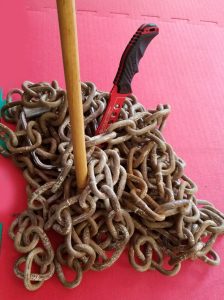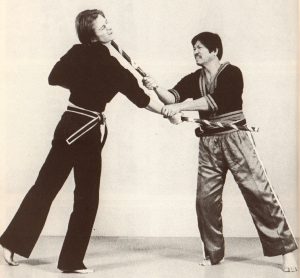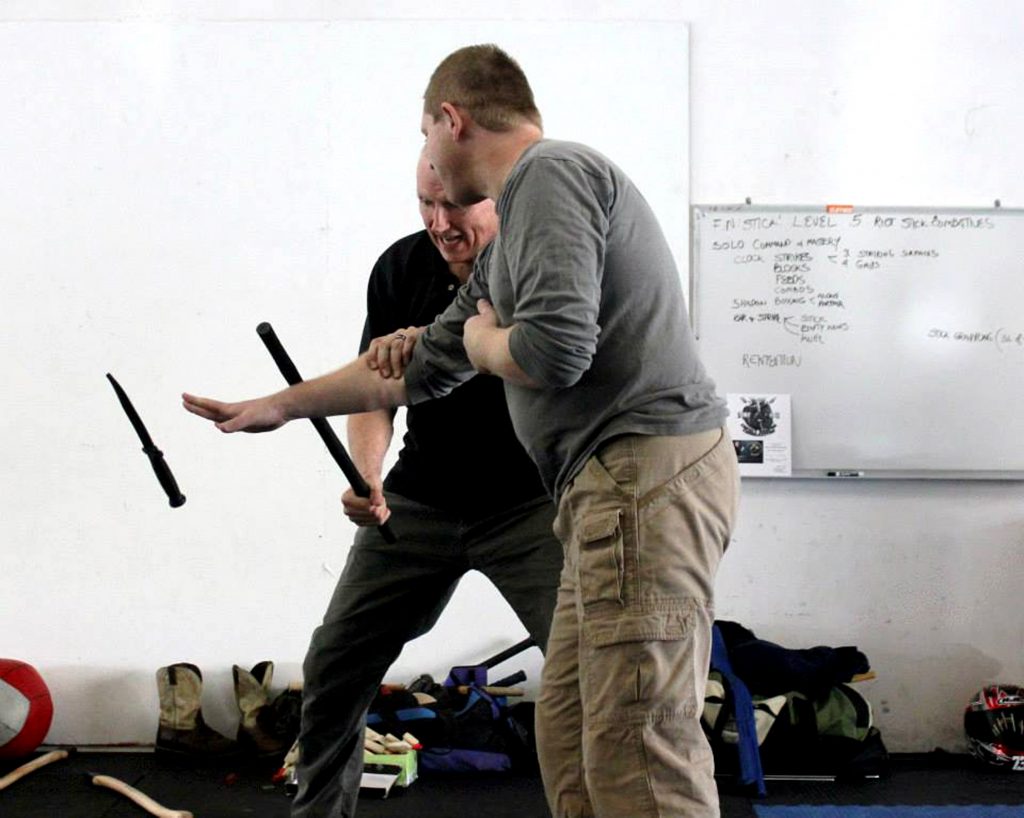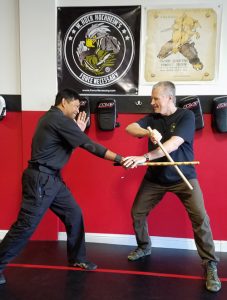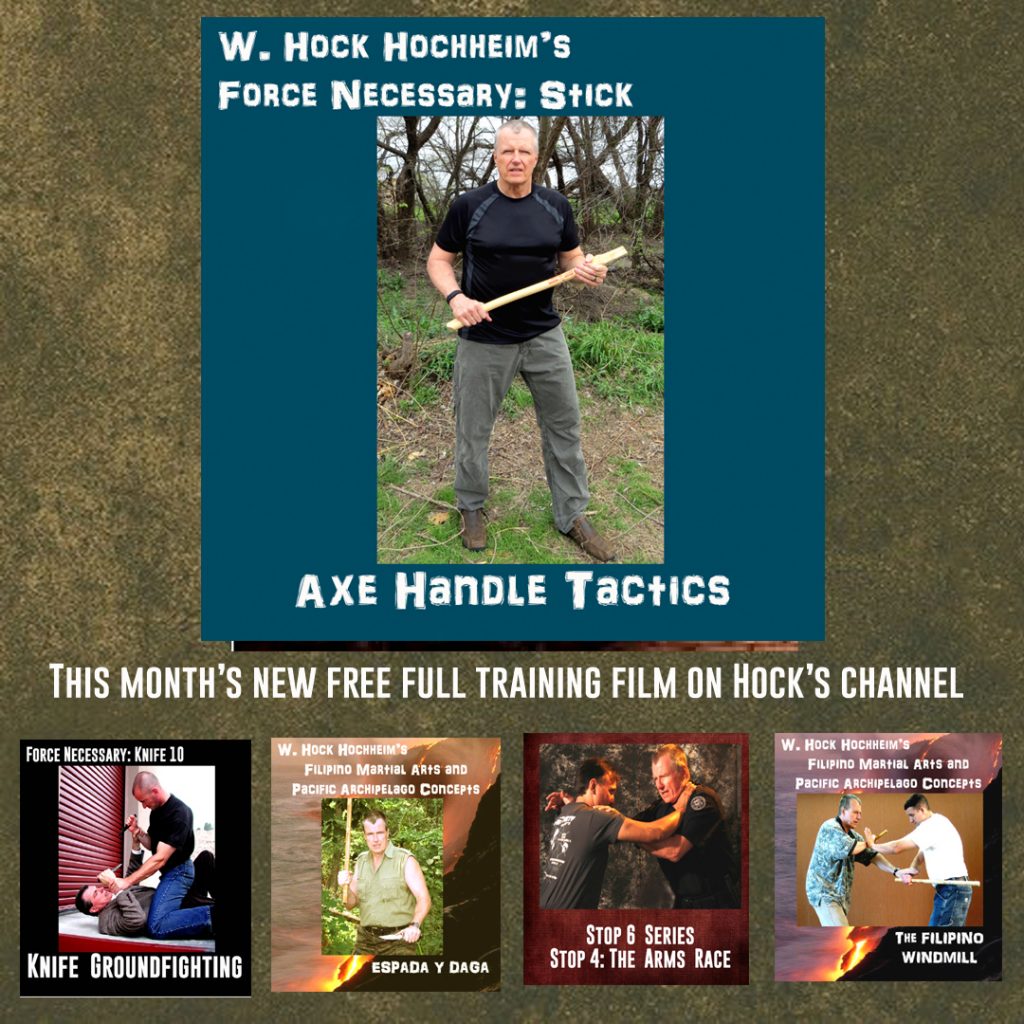As taught to me from several FMA instructors from the Presas Family to the Inosanto family, going back decades, the classic “Chain of the____ (fill in the blank)” drills were an important stage in training progressions.
Chain of the Hand – cadena de mano
Chain of the Stick – cadena de baston
Chain of the Knife – cadena de daga
It essentially is blocking (as in hitting the attack very hard), then grabbing the attacking limb with your free/support hand. Or grabbing the attacking stick itself too, if that’s the case. Shoving the grab out of the way and hitting back with your hand, or your stick, or your knife. From….
From the outside right position
From the inside right position
From the inside left position
From the outside left position
From above, right or left
From below, right or left
It, in my opinion is usually practiced too cavalierly and too slowly and can create a false sense of speed and success versus fighting in real time for unenlightened students.
And, it might be best against a diminished fighter – one already cracked in the head or say – knee, or against one who is quickly out of gas. Or, is untrained and nonathletic, drugged, etc… Some might call it “second tier” options. But watch the guys who make a living teaching this like I have seen in the Philippines and they are VERY fast and can snatch a fast limb or a speedy stick with good success. In fact, when I was about 30 years old and doing this stuff all the time, I got pretty good at it too. But, it ain’t easy. And remember not everyone you fight is a speedy boxer or stick fighter. Have you seen the Youtube clips lately? Grabbing is not impossible.
The word “chain” is used in many martial ways. We hear it in everything from chain punching to grabs to machine guns. These concepts go back to Europe also, and passed through the Philippines, as you will hear versions of these “Espanyol-ish” terms back in Spain, Portugal and Italy. We are quick to credit the Philippines for a lot of stuff, but we shouldn’t be so quick. I have seen the move in karate, American Apache knife fighting. Or football even (even roller derby!). You want to call it Wing Chun trapping hands? You can! Tapi-Tapi? Sure? Looks like Balintawak? Yes. As Remy would often say “it is all de same.”
Chaining with weapons: You’ve hit the attacking limb so hard, he drops the weapon! Yeah. Bloody good for you (this impact is trained in a progression series). But, what if he doesn’t drop the weapon? Well, crap! But maybe you have at least diminished his grip with a little pain? But sometimes your impact/block STOPPED his incoming attack. Stopped it long enough to be grabbed. This grab, is…the “chain of…something.” If you have virtually stopped or really slowed down an incoming attack, you might have a chance to grab the limb.
This, as explained to me so long ago I can’t remember by whom, – that hand grab, that hand catch, is the first “link” of survival. The first link of the chain. Link-Chain. Get it? Thus the “Chain of Something” has an official name for a chapter in training lifestyles. Thank you very much.
Of course, the next step in the chain is to block or stop that incoming strike after YOU’VE been grabbed. Then you, then he, then you, then he, then, then. Then…then you have a system of study for hand, stick and knife. I use the universal, unforgettable, Combat Clock for angles of attack, but you apply your chosen hobby’s angle of attack system to play the the “Then-Then” game. This ain’t brain surgery or rocket science.
Many martial artists and systems use this chain concept. Remy used the “Chains” too, These close-up “Chain” events. This area of course, is just a segment of a fight. I think some stick systems spend entirely TOO MUCH TIME here at the expense of other problems (like stick dueling for one). In the olden days, Remy was a real mover and head-banger and he spent copious amounts of time making us swing sticks and hit as hard as we could at longer ranges. Ernesto too.
Remy was fond of showing things and then stopping, looking at us and saying to us, “Of course, you could just hit the man in the head with a stick, but I want you to learn the art.”
Hock’s email is HockHochheim@ForceNecessary.com
Get these PAC Filipino downloads here
